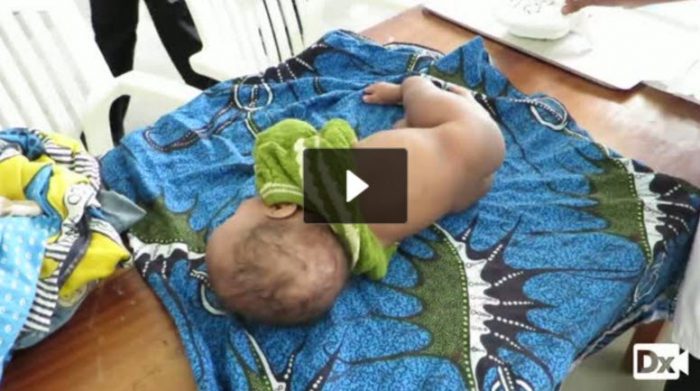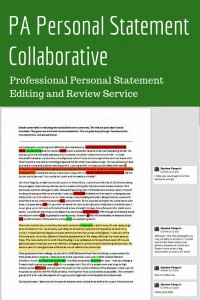Ten Mixed NCCPA™ PANCE Content Blueprint Multiple Choice Questions
Welcome to episode 63 of the FREE Audio PANCE and PANRE Physician Assistant Board Review Podcast.
Join me as I cover ten PANCE and PANRE Board review questions from the SMARTYPANCE course content following the NCCPA™ content blueprint (download the FREE cheat sheet).
This week we will be covering ten general board review questions based on the NCCPA PANCE and PANRE Content Blueprint.
Below you will find an interactive exam to complement the podcast.
I hope you enjoy this free audio component to the examination portion of this site. The full board review includes over 2,000 interactive board review questions and is available to all members of the PANCE and PANRE Academy and SMARTYPANCE which are now bundled together into one very low price.
- You can download and listen to past FREE episodes here, on iTunes, on Google Play Music or Stitcher Radio.
- You can listen to the latest episode, take an interactive quiz and download your results below.
Listen Carefully Then Take The Practice Exam
If you can't see the audio player click here to listen to the full episode.
Episode 63 - General PANCE/PANRE Podcast Quiz
The following 10 questions are linked to NCCPA Content Blueprint lessons from the SMARTYPANCE and PANRE Board review website. If you are a member you will be able to log in and view this interactive video content.
1. A 24-year-old male presents complaining of a 9-month history of increasing shortness of breath, dyspnea on exertion, and a cough productive of white sputum, mostly in the mornings. He denies orthopnea, PND, peripheral edema, fever, chills, night sweats, recent changes in weight, palpitations, chest pain, food intolerances, or other complaints. Patient has a history of recurrent lung infections. He states that his father had chronic pulmonary problems and died at age 42 from unknown lung disease. The patient denies smoking, alcohol or illicit drug use. On physical examination, the respiratory rate is 22 breaths per minute, a pulse of 98 bpm, a temperature of 98.7 degrees. Pulmonary exam reveals end-expiratory wheezes bilaterally and hyperresonance to percussion. His cardiac exam is normal. Chest X-ray shows decreased lung markings. ECG is normal. Pulmonary function tests show an FEV1 63% of expected and residual capacity is 123% of expected. Which of the following is the most likely diagnosis?
A. Emphysema
B. Pulmonary fibrosis
C. Ventricular septal defect
D. Congestive heart failure
2. A male patient complains of chronic dysuria, frequency, and urgency with associated perineal pain. The most likely diagnosis is
A. cystitis
B. gonococcal urethritis
C. epididymitis
D. prostatitis
3. Which of the following preventive strategies against osteoporosis-associated vertebral fractures has a known side effect of increasing the incidence of hot flashes when used in a perimenopausal female?
A. Calcitonin (Miacalcin) nasal spray
B. Alendronate (Fosamax)
C. Estrogen/progesterone (Prempro)replacement
D. Raloxifene (Evista)
Osteoporosis is covered as part of the PANCE Musculoskeletal Blueprint
4. A 70-year-old presents with a headache and neck stiffness. On physical exam, the patient is febrile, Kernig's sign is present, and no rash is noted. A spinal tap reveals a white count of 250/cm3 with 100% neutrophils, total protein 250mg/dL, and glucose 35 mg/dL. Which of the following is the most appropriate treatment?
A. Acyclovir (Zovirax)
B. Fluconazole (Diflucan)
C. Ampicillin and ceftriaxone (Rocephin)
D. Penicillin and chloramphenicol (Chloromycetin)
Bacterial meningitis is covered as part of the PANCE Neurology Blueprint
5. A 45-year-old patient with type 1 diabetes mellitus is being screened for diabetic nephropathy. Which of the following urinalysis findings is most consistent with early diabetic nephropathy?
A. Microalbuminuria
B. Red cell casts
C. White cell casts
D. Renal epithelial cells
Diabetic neuropathy is covered as part of the PANCE Endocrinology Blueprint
6. A 74-year-old female is being treated for mild hypertension. She is found at home with right hemiparesis and brought to the emergency department. Her daughter states that the patient fell in her kitchen 2 days ago, but had no complaints at that time. She did state that her mother sounded a little confused this morning. The patient's left pupil is dilated. Which of the following diagnostic studies should be ordered first?
A. MRI of the brain
B. CT scan of the brain
C. Skull x-ray
D. Lumbar puncture
7. A post-op patient has signs and symptoms highly suggestive of a pulmonary embolism. The results of the CT scan of the lung is nondiagnostic. What is the most appropriate next step in the evaluation?
A. Ventilation-perfusion (V/Q) scan
B. Ultrasound of the legs
C. Echocardiography
D. D-dimer
Pulmonary embolism and is part of the PANCE Pulmonary Blueprint
8. Seizures that first manifest in early to middle adult life should be considered suspicious of which of the following causes?
A. Cerebrovascular disease
B. Encephalitis
C. Tumor
D. Idiopathic epilepsy
Seizure disorders are covered as part of the PANCE Neurology Blueprint
9. Which of the following medications used in the treatment of supraventricular tachycardia is able to cause sinus arrest and asystole for a few seconds while it breaks the paroxysmal supraventricular tachycardia?
A. Digoxin (Lanoxin)
B. Adenosine (Adenocard)
C. Verapamil (Calan)
D. Quinidine (Quinaglute)
Paroxysmal supraventricular tachycardia is covered as part of the PANCE Cardiology Blueprint
10. A 32-year-old presents with a 3-day history of diarrhea. The patient denies blood, mucus, or night awakening with diarrhea. He recently returned from a business trip to Canada. On physical examination, the patient is afebrile and vital signs reveal BP 115/80, the pulse is 76, and respirations are 14. The abdominal examination reveals hyperactive bowel sounds but is otherwise unremarkable. Which of the following is the most appropriate initial intervention?
A. Stool for culture, ova, and parasites
B. Proctosigmoidoscopy
C. Metronidazole (Flagyl)
D. Supportive treatment
Infectious and Noninfectious Diarrhea are covered as part of the NCCPA PANCE GI and Nutrition Blueprint
Looking for all the podcast episodes?
This FREE series is limited to every other episode, you can download and enjoy the complete audio series by joining The PANCE and PANRE Exam Academy + SMARTYPANCE
I will be releasing new episodes every few weeks. The Academy is discounted, so sign up now.
Resources and Links From The Show
- My list of recommended PANCE and PANRE review books
- Download the FREE PANCE and PANRE Blueprint Checklist
- Sign up for the FREE daily PANCE and PANRE email series
- Join the Smarty PANCE NCCPA Content Blueprint Website + The PA Life Academy
- Get 20% of any Picmonic membership by using this link
- Use Code "PALIFE" and get 10% OFF THE RUTGERS PANCE AND PANRE REVIEW COURSE
This Podcast is also available on iTunes and Stitcher Radio for Android
- iTunes: The Audio PANCE AND PANRE Podcast iTunes
- Stitcher Radio: The Audio PANCE and PANRE Podcast Stitcher
Download The Content Blueprint Checklist
Follow this link to download your FREE copy of the Content Blueprint Checklist
Print it up and start crossing out the topics you understand, marking the ones you don't and making notes of key terms you should remember. The PDF version is interactive and linked directly to the individual lessons on SMARTY PANCE.
Podcast: Download (14.3MB) | Embed
Subscribe: Email | RSS | PANCE and PANRE Podcast Player
View all posts in this series
- The Audio PANCE and PANRE Board Review Podcast Episode 1
- The Audio PANCE and PANRE Board Review Podcast Episode 3
- The Audio PANCE and PANRE Board Review Podcast Episode 5
- The Audio PANCE and PANRE Board Review Podcast Episode 7
- The Audio PANCE and PANRE Board Review Podcast Episode 9
- The Audio PANCE and PANRE Board Review Podcast Episode 11
- The Audio PANCE and PANRE Board Review Podcast Episode 13
- The Audio PANCE and PANRE Board Review Podcast Episode 15
- The Audio PANCE and PANRE Board Review Podcast Episode 17
- The Audio PANCE and PANRE Board Review Podcast Episode 19
- The Audio PANCE and PANRE Board Review Podcast Episode 21
- The Audio PANCE and PANRE Board Review Podcast Episode 23
- The Audio PANCE and PANRE Board Review Podcast Episode 25
- Cardiology 1: The Audio PANCE and PANRE Podcast Topic Specific Review Episode 27
- Pulmonology 1: The Audio PANCE and PANRE Podcast Topic Specific Review Episode 29
- Gastroenterology 1: The Audio PANCE and PANRE Podcast Topic Specific Review Episode 31
- EENT 1: The Audio PANCE and PANRE Board Review Podcast Topic Specific Review Episode 33
- Genitourinary 1: The Audio PANCE and PANRE Board Review Podcast Topic Specific Review Episode 35
- Musculoskeletal 1: The Audio PANCE and PANRE Board Review Podcast Topic Specific Review Episode 37
- Reproductive System 1: The Audio PANCE and PANRE Board Review Podcast Topic Specific Review Episode 39
- Episode 41: The Audio PANCE and PANRE Board Review Podcast
- Episode 43: The Audio PANCE and PANRE Board Review Podcast
- Murmur Madness: The Audio PANCE and PANRE Episode 45
- Episode 47: The Audio PANCE and PANRE Board Review Podcast – Comprehensive Audio Quiz
- Episode 49: The Audio PANCE and PANRE Board Review Podcast – Comprehensive Audio Quiz
- Episode 51: The Audio PANCE and PANRE Board Review Podcast – Comprehensive Audio Quiz
- Episode 53: General Surgery End of Rotation Exam – The Audio PANCE and PANRE Podcast
- Episode 55: The Audio PANCE and PANRE Board Review Podcast
- Episode 57: The Audio PANCE and PANRE Board Review Podcast
- Episode 59: Emergency Medicine EOR – The Audio PANCE and PANRE Board Review Podcast
- Episode 61: The Audio PANCE and PANRE Board Review Podcast
- Episode 63: The Audio PANCE and PANRE PA Board Review Podcast
- Podcast Episode 65: Hepatitis B Breakdown With Joe Gilboy PA-C
- Podcast Episode 67: Ten PANCE and PANRE Board Review Audio Questions
- Podcast Episode 69: Ten PANCE and PANRE Board Review Audio Questions
- Podcast Episode 71: Ten PANCE and PANRE Board Review Audio Questions
- Podcast Episode 73: Ten FREE PANCE and PANRE Audio Board Review Questions
- Podcast Episode 75: Ten FREE PANCE and PANRE Audio Board Review Questions
- Podcast Episode 77: The Audio PANCE and PANRE Board Review Podcast
- How to Study for Your PANCE: Podcast Episode 79
- Podcast Episode 81: Internal Medicine EOR Cardiology Questions
- How to Answer the Hardest PANCE and PANRE Test Questions: Podcast Episode 82
- How to Answer Tricky PANCE and PANRE Test Questions Part 2: Podcast Episode 83
- Cardiac Pharmacology Part One: The Audio PANCE and PANRE Episode 84
- Podcast Episode 85: Ten Mixed Multiple Choice Questions
- How to Be a Better PA Part 1: Nurses, Lab Techs, and X-Ray Technicians
- Podcast Episode 87: Ten Internal Medicine EOR Questions
- How to Be a Better PA Part 2: Medical Staff, Administrators, and Supervisors
- Podcast Episode 89: Ten PANCE, PANRE, and Rotation Review Questions
- Podcast Episode 90: Ten PANCE, PANRE, and Rotation Review Questions






















Good morning. In episode 63, question # 7: 7. A post-op patient has signs and symptoms highly suggestive of a pulmonary embolism. The results of the CT scan of the lung is nondiagnostic. What is the most appropriate next step in the evaluation?
A. Ventilation-perfusion (V/Q) scan
B. Ultrasound of the legs
C. Echocardiography
D. D-dimer
Can you please explain why “B” is the right answer? I’m thinking the clot has already moved to the lungs, so why the need to ultrasound the legs? What would it show?
Hi Shelia, this really isn’t a perfect question. The diagnostic algorithm for suspected/high probability PE is based on several findings that were not well described in this questions. Here are the most recent guidelines as per UpToDate.
CT pulmonary angiography is also called chest CT angiogram with contrast and is tailored for to evaluate the pulmonary arteries. A conventional chest CT with contrast is not adequate to exclude PE.
PE: pulmonary embolism; CT: computed tomography.
* We prefer the Wells criteria to determine the pretest probability of PE, although the modified Geneva score or clinical gestalt is also appropriate. Refer to UpToDate text for details.
¶ Feasibility requires adequate scanner technology. Also the patient must be able to lie flat, to cooperate with exam breath-holding instructions, have a body habitus that can fit into scanner, and no contraindications for iodinated contrast.
Δ Repeat CT pulmonary angiography for more definitive results may be worthwhile if the factor causing poor image quality can be mitigated (eg, patient more capable of co-operating with positioning and breath-holding instructions). Repeat imaging is unlikely to prove useful if exam is nondiagnostic from factors such as scanner technology, body habitus, or indwelling metallic foreign bodies.
◊ Feasibility requires a chest radiograph demonstrating clear lungs and a patient able to lie still for >30 minutes.
§ Further testing first involves revisiting the feasibility of CT pulmonary angiography. If CT pulmonary angiography is still not feasible then lower extremity compression ultrasonography with Doppler is appropriate.